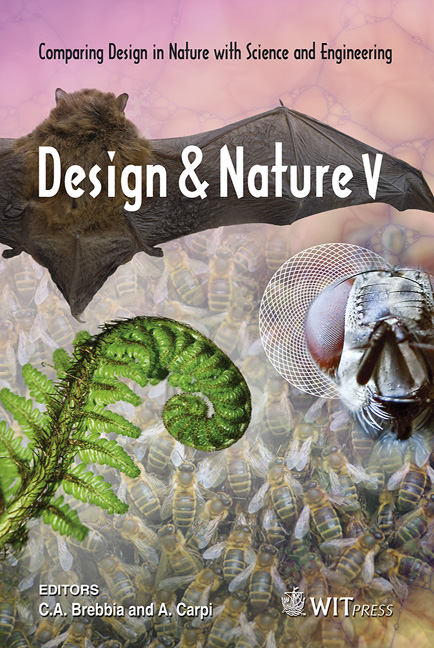Abstraction Of Bio-inspired Curved-line Folding Patterns For Elastic Foils And Membranes In Architecture
Price
Free (open access)
Transaction
Volume
138
Pages
11
Page Range
479 - 489
Published
2010
Size
3,632 kb
Paper DOI
10.2495/DN100431
Copyright
WIT Press
Author(s)
S. Schleicher, J. Lienhard, S. Poppinga, T. Speck & J. Knippers
Abstract
ion of bio-inspired curved-line folding patterns for elastic foils and membranes in architecture S. Schleicher1,3,4, J. Lienhard1,3,4, S. Poppinga2,3,4, T. Speck2,3,4 & J. Knippers1,3,4 1Institute of Building Structures and Structural Design (ITKE), University of Stuttgart, Germany 2Plant Biomechanics Group Freiburg, Botanic Garden, Faculty of Biology, University of Freiburg, Germany 3Competence Network Biomimetics, Baden-Württemberg, Germany 4Bionics Competence Network (BIOKON e.V.), Germany Abstract Today’s architectural foils and membranes amaze with their superior strength-toweight ratio and are often implemented as lightweight building envelopes or shading devices. Most claddings, however, are optimized for high tensile strength, which reduces the design possibilities to pre-stressed inflexible shapes. Only a few projects are exploring the potential inherent in the membrane’s low bending stiffness. Nowadays, new materials and manufacturing methods allow for customized pliability of semi-rigid thin-shell structures, which fully tap the potential of reversible elastic deformation. While this concept has hardly been used in architecture, convertible surfaces are rampant in nature. Therefore, the aim of this paper is to review in general how nature’s soft, flexible, and forceadaptive structures may inspire the development of technical membrane structures and outline their architectural potential in particular. Focusing on bio-inspired pliable systems that show distinct curved-line folding principles will be the framework for a close collaboration among architects, engineers, and biologists. Examining the flower opening of Ipomoea alba will clarify the drawbacks and opportunities of elastic kinematics. Therefore, the first part of the study will introduce this nocturnal flower, whose environmentally responsive petals adapt their geometry in a circadian rhythm. Morphological and anatomical analyses will secondly lead to a better understanding of their primarily
Keywords
plant movements, biomimetics, architecture, deployable structures, pliable structures, curved-line folding





